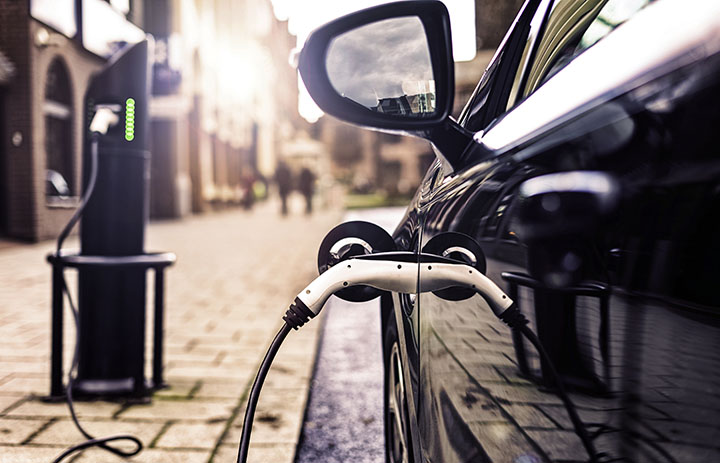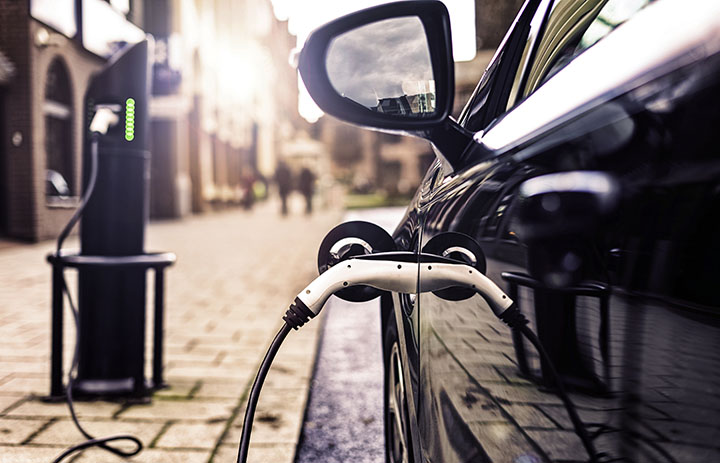Zero Emission Vehicles: Forecasting Fleet Scenarios and their Emissions Implications
Clients
National Cooperative Highway Research Program (NCHRP)
U.S. Transportation Research Board (TRB)
Zero emission vehicles (ZEVs), such as fuel cell or battery electric vehicles, have the potential to substantially reduce emissions from the light-duty vehicle fleet, improve air quality, and help achieve climate change goals. An important policy need is to identify the most effective actions state and local agencies can take to accelerate ZEV fleet penetration. Sonoma Technology and its study partner, Louis Berger, completed this project to provide ZEV adoption insights to state departments of transportation (DOTs) and regional metropolitan planning organizations (MPOs). A focus of this study was to estimate emissions reductions of criteria pollutants, mobile source air toxics (MSATs), and greenhouse gases (GHGs).<br>
We developed policy-relevant findings by modeling light-duty ZEV adoption and emissions impacts using the Oak Ridge National Laboratory <i>Market Acceptance of Advanced Automotive Technologies (MA<sup>3</sup>T)</i> model and the U.S. Environmental Protection Agency (EPA) <i>MOtor Vehicles Emission Simulator</i> (MOVES2014b) model. ZEV modeling covered three scenarios representing key factors affecting ZEV adoption:
<ul><li>Substantial expansion of infrastructure for ZEV charging</li>
<li>Advanced use of policies and incentives such as ZEV purchase rebates</li>
<li>Accelerated achievement of cost parity with internal combustion engine vehicles (ICEVs)</li></ul> <br>
Compared to a “business as usual” base case, the largest modeled ZEV fleet increases involved scenarios where cost parity between ZEVs and ICEVs is achieved by 2030, and a $0.10 per gallon increase in gasoline prices occurs each year between 2019 and 2040. This result was consistent with the findings of our literature review, which indicated that cost is the greatest barrier to ZEV adoption. The modeled percentage of ZEVs relative to the total U.S. light-duty vehicle population in the base-case scenario was about 10% in 2040; in the scenario where cost parity is reached by 2030, the modeled percentage of ZEVs in 2040 increased to about 40%. The cost parity scenario also yielded the largest modeled emissions reductions, including reductions in carbon dioxide (CO<sub>2</sub>) emissions of up to 23%. Notable decreases in emissions were also seen in scenarios that provided (1) long-duration ZEV purchase rebates in states that did not already have rebates, and (2) extended free access to high-occupancy vehicle (HOV) lanes.<br>
For more information, see our final report: National Academies of Sciences, Engineering, and Medicine 2019. Zero Emission Vehicles: Forecasting Fleet Scenarios and their Emissions Implications. Washington, DC: The National Academies Press. <a href=https://doi.org/10.17226/25709 target="_blank">https://doi.org/10.17226/25709</a href>.<br>
Sonoma Technology and our partner scientists presented major study findings in a TRB webinar on June 30, 2020; webinar slides and additional information are available at the links provided below.
We developed policy-relevant findings by modeling light-duty ZEV adoption and emissions impacts using the Oak Ridge National Laboratory <i>Market Acceptance of Advanced Automotive Technologies (MA<sup>3</sup>T)</i> model and the U.S. Environmental Protection Agency (EPA) <i>MOtor Vehicles Emission Simulator</i> (MOVES2014b) model. ZEV modeling covered three scenarios representing key factors affecting ZEV adoption:
<ul><li>Substantial expansion of infrastructure for ZEV charging</li>
<li>Advanced use of policies and incentives such as ZEV purchase rebates</li>
<li>Accelerated achievement of cost parity with internal combustion engine vehicles (ICEVs)</li></ul> <br>
Compared to a “business as usual” base case, the largest modeled ZEV fleet increases involved scenarios where cost parity between ZEVs and ICEVs is achieved by 2030, and a $0.10 per gallon increase in gasoline prices occurs each year between 2019 and 2040. This result was consistent with the findings of our literature review, which indicated that cost is the greatest barrier to ZEV adoption. The modeled percentage of ZEVs relative to the total U.S. light-duty vehicle population in the base-case scenario was about 10% in 2040; in the scenario where cost parity is reached by 2030, the modeled percentage of ZEVs in 2040 increased to about 40%. The cost parity scenario also yielded the largest modeled emissions reductions, including reductions in carbon dioxide (CO<sub>2</sub>) emissions of up to 23%. Notable decreases in emissions were also seen in scenarios that provided (1) long-duration ZEV purchase rebates in states that did not already have rebates, and (2) extended free access to high-occupancy vehicle (HOV) lanes.<br>
For more information, see our final report: National Academies of Sciences, Engineering, and Medicine 2019. Zero Emission Vehicles: Forecasting Fleet Scenarios and their Emissions Implications. Washington, DC: The National Academies Press. <a href=https://doi.org/10.17226/25709 target="_blank">https://doi.org/10.17226/25709</a href>.<br>
Sonoma Technology and our partner scientists presented major study findings in a TRB webinar on June 30, 2020; webinar slides and additional information are available at the links provided below.
Air Quality
Climate
Emissions
Forecasting


Garnet B. Erdakos

Garnet
B.
Erdakos
Group Manager, Atmospheric and Emissions Modeling / Senior Scientist
gerdakos@sonomatech.com
/sites/default/files/2024-09/GBEres.pdf
